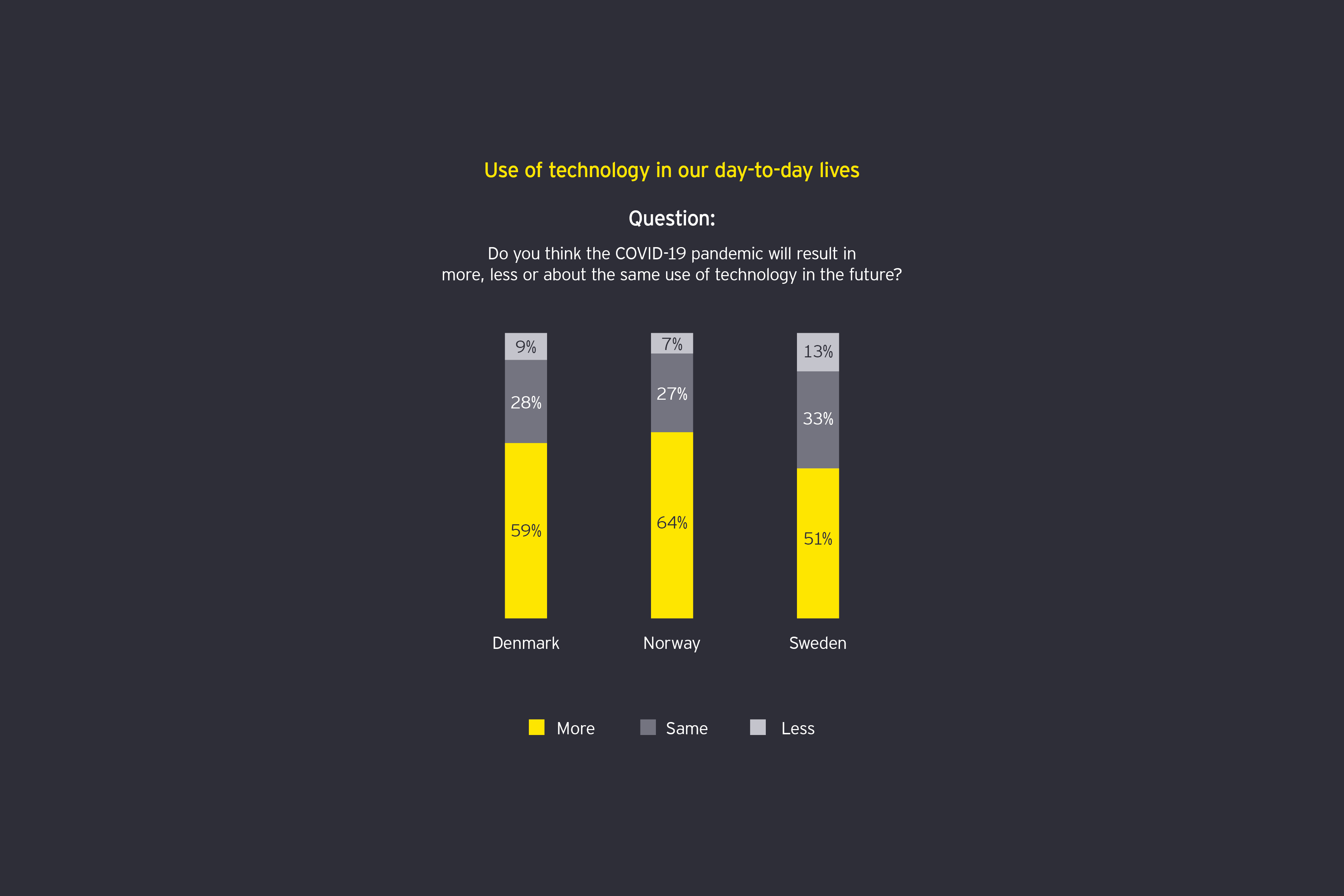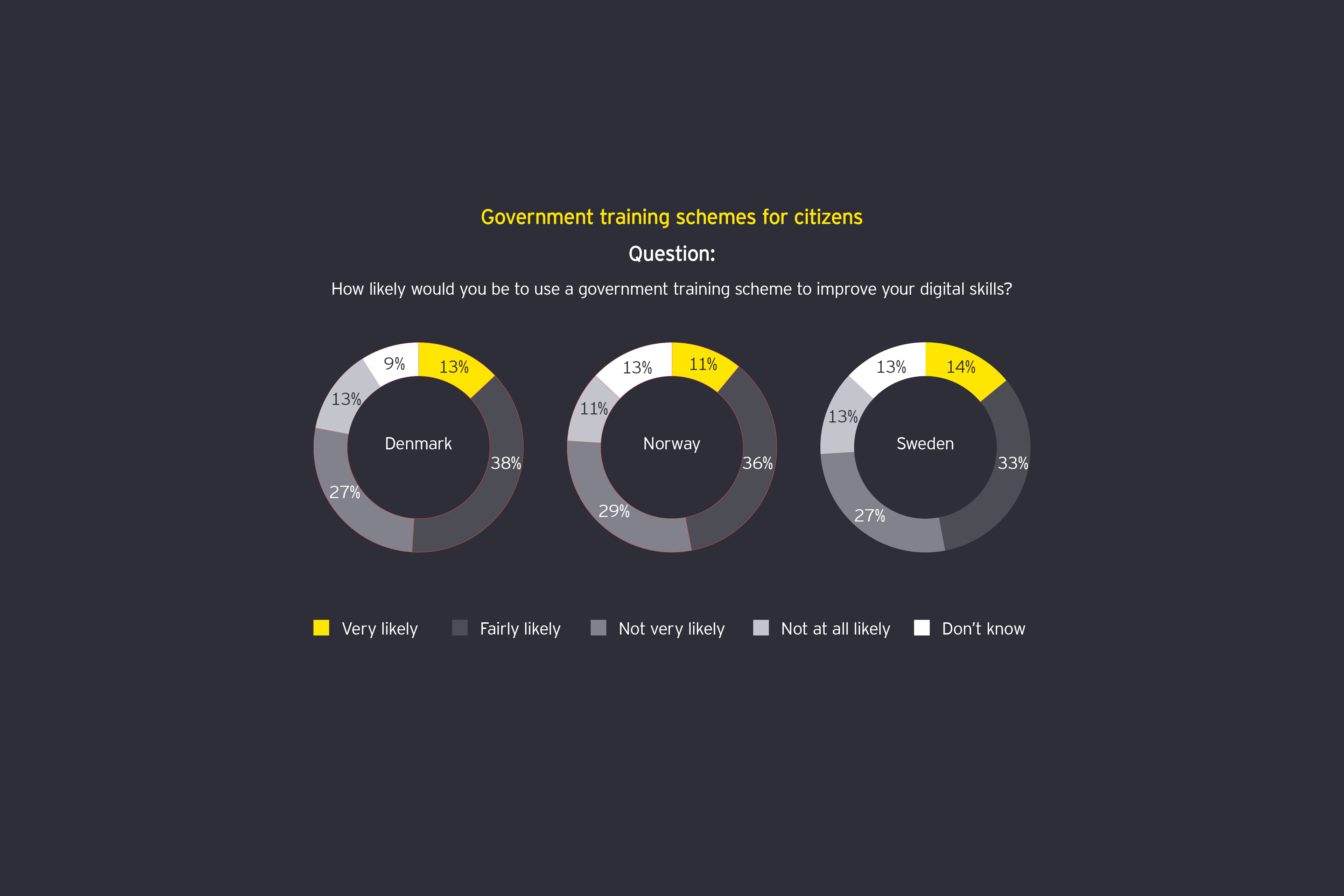The pandemic changed people’s expectations of technology, with the remote set-up pushing them to grow more digitally connected. Now more familiar with technology, most people have clear expectations of how technology should help them with their day-to-day activities. In the Nordic countries – specifically Norway, Sweden and Denmark – 62% of citizens surveyed believe that technology makes life better, with 69% agreeing that it’s needed to solve future problems.
Overall, Nordic citizens are optimistic that advancements in technology will positively impact their lives. However, there are still sections of people who find technology challenging and overwhelming. Thirty-two percent of Nordic citizens feel that while technology can be a major enabler, it could result in greater inequality in society.
But what does these perceptions of technology mean for the public and private sectors?
While the private sector has taken the lead in driving digital services seamlessly, the public sector has some catching up to do. As governments shift more services online, core capabilities such as high-speed digital networks and digital payment systems become more critical. Disparities in connectivity and digital access will have huge implications for groups that have limited access to technology.
Without a deeper understanding of people’s expectations of and access to technology, ambitious digital public services will only disconnect more citizens. Governments must understand people’s relationship with technology before continuing to digitize public service delivery.
EY has launched a major research initiative – Connected Citizens – to examine people’s expectations for the role of government and public services, and the nature of the relationship between those who govern and those who are governed.
The study was conducted for 19 countries with the aim to help governments prepare for the future through clear insight into the changing expectations of citizens. In this report, we focus on the findings for Norway, Denmark and Sweden.







